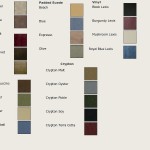A list of medical equipment and supplies that are covered—or not covered—by Medicare.
The following list features some general categories of durable medical equipment and supplies, along with notations as to whether or not each item is covered by Medicare. This list is intended as a general reference only. Medicare regulations change often, so check with your local Medicare office for information on any specific equipment that you may need.
Remember that Medicare generally defines durable medical equipment as equipment that:
Can withstand repeated use.
Is appropriate for use in the home.
Air Cleaners: Not covered. Not primarily medical in nature.
Air Conditioners: Not covered. Not primarily medical in nature.
Air-Fluidized Bed: Covered in certain cases. Such a bed may be ordered in writing by a physician only after other treatment has been tried without success.
: Covered in certain cases. Your loved one’s doctor must specify that he or she will be supervising their use in connection with your loved one’s treatment.
Audible/Visible Signal Pacemaker Monitor: Covered when prescribed by a doctor.
Augmentative Communication Device: Not covered. Not primarily medical in nature.
Bathtub Lifts: Not covered. Not primarily medical in nature.
: Not covered. Not primarily medical in nature.
Bead Bed: Covered in certain cases. Must be prescribed by a doctor.
Bed Baths: Not covered. Not primarily medical in nature.
Bed Lifter: Not covered. Not primarily medical in nature.
Bedboards: Not covered. Not primarily medical in nature.
: Covered if your loved one is confined to his or her bed.
: Covered if your loved one’s condition requires them, and if Medicare has already determined that your loved one requires a hospital bed.
—Lounge: Not covered. Not primarily medical in nature.
—Oscillating: Not covered. Inappropriate for home use.
Blood Glucose Analyzer/Reflectance Colorimeter: Not covered. Unsuitable for home use.
Blood Glucose Monitor: Covered for diabetics who are able to test themselves at home.
Braille Teaching Texts: Not covered. Not primarily medical.
Canes: Covered if your loved one’s medical condition impairs his or her ability to walk.
Catheters: Not covered. Non-reusable/disposable.
Commodes: --Covered if your loved one is confined to his or her bed or room
Communicator: Not covered. Not primarily medical in nature.
Continuous Passive Motion Devices: Continuous Passive Motion devices are covered for persons who have received a total knee replacement. To qualify for coverage, your loved one must begin using the device within two days following his or her surgery. In addition, coverage is limited to that portion of the three-week period following surgery during which your loved one would use the device at home.
Continuous Positive Airway Pressure (CPAP): Covered if your loved one has been diagnosed with obstructive sleep apnea and surgery is a likely alternative to use of a CPAP. Your loved one’s doctor must document these conditions in order for the item to be covered.
Crutches: Covered if your loved one’s condition impairs his or her ability to walk.
Cushion Lift Power Seat: Covered only in certain very specific cases. If your loved one has severe arthritis of the hip or knee, or muscular dystrophy or other neuromuscular disease and a doctor has determined that he or she can benefit therapeutically from use of the device, then a seat lift may be covered by Medicare. Check with the local Medicare office for more information.
Dehumidifiers: Not covered. Not primarily medical in nature.
Diathermy Machines: Not covered. Inappropriate for home use.
Digital Electronic Pacemaker Monitor: Covered when prescribed by a doctor.
Disposable Sheets and Bags: Not covered. Non-reusable/disposable.
Elastic Stockings: Not covered. Non-reusable.
Electric Air Cleaners: Not covered. Not primarily medical in nature.
Electric Hospital Beds: Covered under very specific conditions and must be ordered by a doctor.
Electrostatic Machines: Not covered. Not primarily medical in nature.
Elevators: Not covered. Not primarily medical in nature.
Emesis Basins: Not covered. Not primarily medical in nature.
Esophageal Dilator: Not covered. Inappropriate for patient use.
Exercise Equipment: Not covered. Not primarily medical in nature.
Fabric Supports: Not covered. Non-reusable.
Face Masks (oxygen): Covered if your loved one is also covered for oxygen (see below).
Face Masks (surgical): Not covered. Non-reusable/disposable.
Flowmeter: Covered if your loved one’s ability to breathe is seriously impaired.
Fluidic Breathing Assister: Covered if your loved one’s ability to breathe is seriously impaired.
Fomentation Device: Not covered. Not primarily medical in nature.
Gel Flotation Pads and Mattresses: Covered in certain cases. Your loved one’s doctor must specify that he or she will be supervising their use in connection with your loved one’s treatment.
Grab Bars: Not covered. Not primarily medical in nature.
Heat and Massage Foam Cushion Pad: Not covered. Not primarily medical in nature.
Heating and Cooling Plants: Not covered. Not primarily medical in nature.
Heating Pads/Hot Packs: Covered if doctors determine that your loved one will benefit medically from the application of heating pads.
Heat Lamps: Covered if doctors determine that your loved one will benefit medically from the application of heat lamps.
Hospital Beds: Covered under very specific conditions and must be ordered by a doctor.
Humidifiers (oxygen): It might be covered if a medical humidifier has been prescribed for use in connection with other medically necessary equipment for purposes of moisturizing oxygen.
Humidifiers (room or central heating system types): Not covered. Not primarily medical in nature.
Hydraulic Lift: Covered if doctors determine that your loved one requires periodic movement to improve, arrest, or retard deterioration in his or her condition.
Incontinent Pads: Not covered. Non-reusable; not primarily medical in nature.
Infusion Pumps: Covered under very specific conditions.
Injectors (hypodermic jet pressure powered devices for injection of insulin): Not covered.
IPPB Machines: Covered if your loved one’s ability to breathe is severely impaired.
Iron Lungs: Covered for treatment of neuromuscular diseases, thoracic restrictive diseases, and chronic respiratory failure.
Irrigating Kit: Not covered. Non-reusable; not primarily medical in nature.
Lymphedema Pumps: Covered.
Massage Devices: Not covered. Not primarily medical in nature.
Mattress: Covered only when a hospital bed is medically necessary.
Medical Oxygen Regulators: Covered if your loved one’s ability to breathe is severely.
Mobile Geriatric Chair: Covered if there is a medical need for this item and it has been prescribed by a doctor in lieu of a wheelchair. Coverage is limited to those chairs having casters of at least 5 inches in diameter and specifically designed to meet the needs of ill, injured, or otherwise impaired individuals. Coverage is denied for the wide range of chairs with smaller casters that are primarily used in homes, offices, and institutions for many purposes not related to the care or treatment of ill or injured persons.
Motorized Wheelchairs: Covered if your loved one’s condition is such that a wheelchair is medically necessary and he or she is unable to operate the wheelchair manually. Other power-operated vehicles that may appropriately be used as wheelchairs may also be covered.
Muscle Stimulators: Covered for certain conditions.
Nebulizers: Covered if your loved one’s ability to breathe is severely impaired.
Oscillating Beds: Not covered. Inappropriate for home use.
Overbed Tables: Not covered. Not primarily medical in nature.
Oxygen: Covered if oxygen has been prescribed for use with medically necessary equipment.
Oxygen Humidifiers: Covered if a medical humidifier has been prescribed for use in connection with medically necessary equipment for purposes of moisturizing oxygen.
Oxygen Tents: Covered for certain specific conditions.
Paraffin Bath Units (Portable): Covered if your loved one has undergone a successful trial period of paraffin therapy ordered by a physician; and if your loved one’s condition is expected to be relieved by long term-use of paraffin baths.
Paraffin Bath Units (Standard): Not covered. Inappropriate for home use.
Parallel Bars: Not covered. Primarily intended for institutional use.
Patient Lifts: Covered if doctors determine that your loved one requires periodic movement to improve, arrest, or retard deterioration in his or her condition.
Percussors: Covered in certain circumstances for persons with chronic obstructive lung disease, chronic bronchitis, or emphysema.
Regulated (adjustable flow rate): Covered under specific conditions.
Preset (flow rate not adjustable): Not covered. Considered emergency, first-aid, or precautionary equipment that is not essentially therapeutic in nature.
Portable Room Heaters: Not covered. Not primarily medical in nature.
Portable Whirlpool Pumps: Not covered. Not primarily medical in nature.
Postural Drainage Boards: Covered if your loved one has a chronic pulmonary condition.
Preset Portable Oxygen Units: Not covered. Considered emergency, first-aid, or precautionary equipment that is not essentially therapeutic in nature.
Pressure Leotards: Not covered. Non-reusable.
Pulse Tachometer: Not covered.
Quad-Canes: Covered if your loved one’s condition impairs his or her ability to walk.
Raised Toilet Seats: Not covered. Not primarily medical in nature.
Reflectance Colorimeters: Not covered. Unsuitable for home use.
Respirators: Covered for treatment of neuromuscular diseases, thoracic restrictive diseases, and chronic respiratory failure.
Rolling Chairs: Covered if there is a medical need for this item and it has been prescribed by a doctor in lieu of a wheelchair. Coverage is limited to those chairs having casters of at least 5 inches in diameter and specifically designed to meet the needs of ill, injured, or otherwise impaired individuals. Coverage is denied for the wide range of chairs with smaller casters that are primarily used in homes, offices, and institutions for purposes not related to the care or treatment of ill or injured persons.
Safety Roller: Covered if your loved one requires a walker, but is physically unable to use a standard wheeled walker.
Sauna Baths: Not covered. Not primarily medical in nature.
Seat Lift: Covered only in certain very specific cases. If your loved one has severe arthritis of the hip or knee, or muscular dystrophy or other neuromuscular disease and a doctor has determined that he or she can benefit therapeutically from use of the device, then a seat lift may be covered by Medicare. Check with the local Medicare office for more information.
Self-Contained Pacemaker Monitor: Covered when prescribed by a physician.
Sitz Bath: Covered in certain circumstances with a doctor’s prescription.
Speech Teaching Machine: Not covered. Not primarily medical in nature.
Stairway Elevators: Not covered.
Standing Table: Not covered, Not primarily medical in nature.
Steam Packs: Covered if doctors determine that your loved one will benefit medically from the application of steam packs.
Suction Machine: Covered if medical staff determines that the machine is medically required and appropriate for home use.
Support Hose: Not covered.
Surgical Leggings: Not covered. Non-reusable.
Telephone Alert Systems: Not covered. Not primarily medical in nature.
Telephone Arms: Not covered. Not primarily medical in nature.
Toilet Seats: Not covered. Not primarily medical in nature.
Traction Equipment: Covered for certain conditions.
Trapeze Bars: Covered if your loved one is bed confined and needs a trapeze bar to sit up, change body position for medical reasons, or to get in and out of bed.
Treadmill Exerciser: Not covered. Not primarily medical in nature.
Ultraviolet Cabinet: Covered under certain circumstances. If your loved one generalized intractable psoriasis, and needs to apply this treatment at home, he or she may qualify.
Urinals (autoclavable hospital type): Covered if your loved one is confined to his or her bed.
Vaporizers: It used to be covered if your loved one had a respiratory illness but this may have changed.
Ventilators: Covered for treatment of neuromuscular diseases, thoracic restrictive diseases, and chronic respiratory failure.
Walkers: Covered if your loved one’s condition impairs his or her ability to walk.
Water and Pressure Pads and Mattresses: Covered in certain cases. Your loved one’s doctor must specify that he or she will be supervising their use in connection with your loved one’s treatment.
Wheelchairs: Covered if your loved one’s condition is such that without the use of a wheelchair he or she would otherwise be bed or chair confined. Your loved one may qualify for a wheelchair and still be considered “bed confined” for purposes of other Medicare equipment benefits.
Wheelchairs (power operated): Covered if your loved one’s condition is such that a wheelchair is medically necessary and he or she is unable to operate the wheelchair manually. Other power-operated vehicles that may appropriately be used as wheelchairs may also be covered.
Whirlpool Bath Equipment: Covered if your loved one is homebound and has a condition for which the whirlpool bath can be expected to provide substantial therapeutic benefit. If your loved one is not homebound, but needs whirlpool bath treatments, Medicare cover the costs of such treatments at hospitals or other facilities.
Whirlpool Pumps: Not covered. Not primarily medical in nature.
http://www.caregiverslibrary.org/Default.aspx?tabid=343
© Copyright FamilyCare America, Inc. All Rights Reserved.
Adapted from Coverage Issues—Durable Medical Equipment developed by the United States Health Care Financing Administration.
















